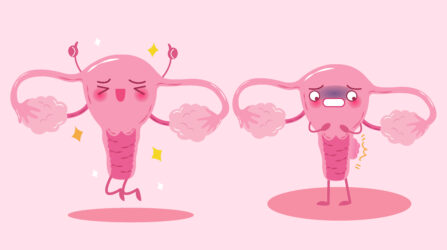For further information or Booking..
Causes of Ovarian Cancer
Ovarian cancer is the third most common cancer among Thai women, following breast and cervical cancer, with nearly 3,000 new cases diagnosed annually. More than half of these patients die each year. However, if detected at Stage 1, the cure rate can be as high as 90%.
Although the exact cause of ovarian cancer is unknown, it is believed that repeated injury to the ovaries, combined with exposure to carcinogens, may contribute to the development of the disease.
Symptoms of Ovarian Cancer
Ovarian cancer symptoms are often subtle and difficult to detect in the early stages. As a result, most patients are diagnosed when the disease is already advanced.
Common symptoms include bloating, abdominal discomfort, poor digestion, and abdominal enlargement. These symptoms often mimic gastrointestinal issues, which can lead to delayed diagnosis.
Importance of Regular Screenings
It is essential for women to undergo annual pelvic examinations. Early detection of an ovarian mass makes treatment easier and significantly increases the chances of recovery.
Key diagnostic methods include pelvic exams and detailed physical assessments. If a mass is detected near the uterus, further imaging tests—such as ultrasound, computed tomography (CT) scans, or magnetic resonance imaging (MRI)—may be required. Blood tests to check for tumor markers are also used to support the diagnosis.
Stages of Ovarian Cancer
-
Stage 1: Cancer is confined to the ovaries.
-
Stage 2: Cancer has spread to the pelvis.
-
Stage 3: Cancer has spread to the abdominal cavity.
-
Stage 4: Cancer has spread to the liver or other organs outside the abdominal cavity.
Most patients are diagnosed at Stage 3, underscoring the importance of prevention and early detection.
Ovarian Cancer Treatment
Treatment for ovarian cancer typically involves a combination of surgery and chemotherapy, depending on the stage.
Surgery may involve the removal of both ovaries, fallopian tubes, uterus, surrounding fatty tissue (omentum), and nearby lymph nodes to assess the extent of the disease.
If the cancer is diagnosed at Stage 1 and has not ruptured, surgery alone may be sufficient. For more advanced stages, chemotherapy is necessary to destroy any remaining cancer cells.
Chemotherapy and Its Side Effects
Chemotherapy is effective in treating ovarian cancer, with a response rate of 75–80% in advanced-stage cases.
Common side effects include fatigue, infections, low white blood cell count, and low platelet count—primarily due to bone marrow suppression.
However, advancements in supportive medications have helped reduce the severity of these effects.
Hair loss is another common side effect, but it is usually temporary and hair typically regrows after treatment ends.
Follow-Up After Chemotherapy
After completing six cycles of chemotherapy, patients require regular follow-up appointments. These include pelvic examinations, blood tests for tumor markers, and occasional CT scans.
In the first two years after treatment, check-ups are recommended every three months. Between years 3 to 5, check-ups should occur every 4 to 6 months. After five years, the frequency may decrease, but regular monitoring remains essential to detect any recurrence.
Care at Phyathai Sriracha Hospital
At Phyathai Sriracha Hospital, our experienced team of female obstetricians and gynecologists provides comprehensive care—from routine examinations and advanced treatments to expert consultations on a wide range of women’s health issues.
We utilize state-of-the-art medical technology, and our services are available from 7:30 AM onward.














